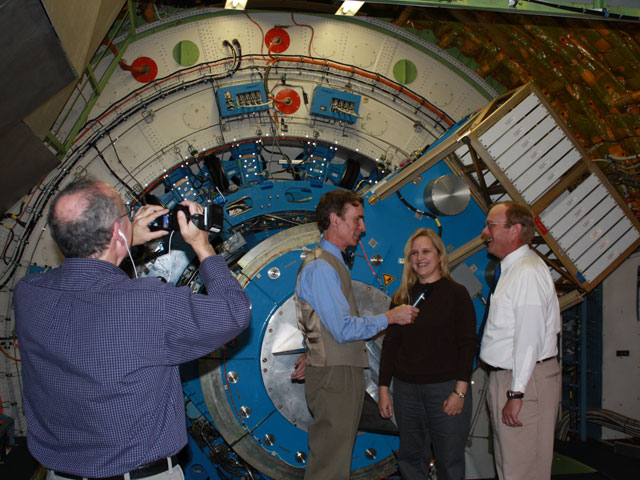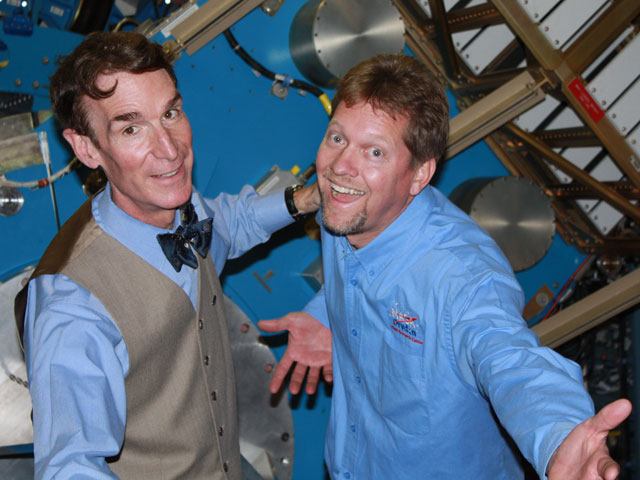 By Patrick C. Stoliker
By Patrick C. Stoliker
Deputy Director of NASA’s Dryden Flight Research Center
It’s springtime again at Dryden. You cantell by the wild fluctuations in weather: cold and dreary, gale force winds, or sunny and balmy – sometimes all in one day! The wild flowers start blooming, sometimes spectacularly; but this year not so much. I was at the Antelope Valley California Poppy Reserve, west of Lancaster, two weeks ago and the poppies were few and far between.
Another principal indicator of springtime is the leap into the Planning, Programming, Budgeting and Execution (PPBE) cycle for the Agency’s budget. For those not familiar with the process, let me explain.
We start off with PPBE guidance trickling out of Washington (stamped Draft, of course). This is followed by Strategic Program Guidance (SPG) – Draft 2. These documents provide the ground rules for each of the Centers and the Agency Mission Directorates to input their budget information into various databases. The budget information includes workforce numbers, procurement expenses and travel. It provides a top-level description of the Agency’s activities for the next five years. Why is this important? Because it helps set the strategic direction and constraints in which we must complete our research priorities.
This is followed by the Program and Resource Guidance (PRG) from each Mission Directorate. The PRG is a more detailed description of the work the Mission Directorates plan to accomplish. We spend the rest of early spring revising inputs based on project plans, getting revised instructions, and revising timelines.
 In reality this is a critical effort. What are the staffing and resource requirements for the Center to successfully operate the SOFIA aircraft for 1,000 hours of science flights? What are the implementation plans for the Aeronautics Research Directorate and how do we utilize our workforce to accomplish them? What is the schedule and what are the appropriate resources to support launch abort system testing for MPCV? Working with all the organizations at the Center, we will develop our best answers to these questions, and effectively use the resources to execute these missions.
In reality this is a critical effort. What are the staffing and resource requirements for the Center to successfully operate the SOFIA aircraft for 1,000 hours of science flights? What are the implementation plans for the Aeronautics Research Directorate and how do we utilize our workforce to accomplish them? What is the schedule and what are the appropriate resources to support launch abort system testing for MPCV? Working with all the organizations at the Center, we will develop our best answers to these questions, and effectively use the resources to execute these missions.
All the while we are using a very blurry crystal ball to extend this guidance five years into the future. So these are the things keeping us busy: building spreadsheets, attending Budget Control Boards, and chasing shifting time lines every spring.
For me, one of the best parts of spring is driving onto the Center at sunrise after the time change and Hangar 4802 is litup and lined with airplanes. That sight never disappoints me.
Two days ago it started bright and sunny, a week ago I shoveled a foot of snow off my driveway, and another storm is coming in this weekend. I’m certain it is going to snow, my apple trees all started blooming this week…it’s springtime at Dryden again.




 As the flight progressed the scientists continued their work, the adrenalin rush that comes from collecting real-time science data keeping them awake. (It had to have been that, because there was no hot coffee anywhere on board.) A flight on SOFIA is literally the only opportunity astronomers get to conduct their work in a shirtsleeve environment.
As the flight progressed the scientists continued their work, the adrenalin rush that comes from collecting real-time science data keeping them awake. (It had to have been that, because there was no hot coffee anywhere on board.) A flight on SOFIA is literally the only opportunity astronomers get to conduct their work in a shirtsleeve environment.
